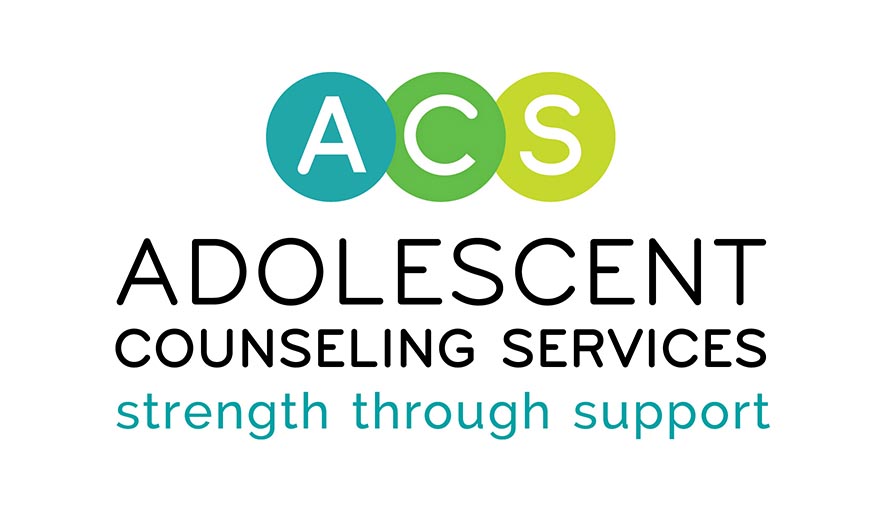
Developing Healthy Relationships in Adolescence
Written By: Andrea Delariyala, Clinical Trainee at ACS, On-Campus Counseling Program
relationships are an
important part of any person’s life. This is especially true for adolescents – they will often experience an increased desire to explore friendships and romantic relationships. This increased interest in friends and movement away from family is a normal part of adolescent development, but can nonetheless be nerve wracking and, at times, frustrating for parents. A way to help your teen navigate these relationships is by helping them be able to identify when these relationships are healthy and when they are not. Here are some of the ways that healthy friendships and romantic relationships are different from unhealthy ones:
Hallmarks of a Healthy Romantic Relationship
- Ability to be one’s self. This means each partner can be themselves, have their own likes and dislikes, participate in activities that are important to them and continue to maintain time spent with friends and family.
- Maintain mutual respect. They show respect for each other’s interest and fears, refrain from using hurtful language, talk out disagreements, maintain safety, and respect boundaries that are set.
- Share trust and are honest with one another. Each partner can express how they feel and what they are thinking without worrying about negative consequences for doing so. They can share important information with each other and respect each other’s privacy.
- Maintain equality within the relationship. They make decisions together, can reach compromises, and can share responsibilities. They can work together to solve problems.
- Communicate openly. They can share feelings, hopes, dreams, and fears with each other. Communication is two-way and open; each partner can feel heard and are able to have space to sort out their feelings or regulate their emotions before talking things out. Communication is supportive, understanding, and arguments are settled in a fair manner.
- Can express fondness and care. Each partner takes interest in what the other enjoys/likes, offers comfort, and expresses affection in ways that they are comfortable with.
Warning Signs of an Unhealthy Romantic Relationship
- Control. One or each partner is trying to control the actions, likes, or relationships that the other has, applies pressure for change, uses intimidation, or uses manipulation to get the other partner to do what they want or act in a certain way.
- Disrespect and safety risk. One or each partner use hurtful, mean spirited, or demeaning language. They disregard or dismiss the other’s opinion, feelings, needs, or desires. There may be a disregard for safety, personal choice and autonomy, or boundary violations.
- Dishonesty and mistrust. One or each partner lies, withholds information, or misleads the other. Cheating or privacy violations may be occurring.
- Emotional Dependence. One or each partner may feel like they cannot function when they are without their partner. They might constantly be in communication with their partner regardless of boundaries the other partner has expressed, use manipulation or threats of extreme consequences to ending the relationship, or may want to keep their partner from spending time with anyone but them.
- Open hostility. Communication is marked by being closed off to listening, instigating fights, or making antagonistic comments. This could create feelings of fear or needing to be overly cautious of how one acts or says something in response. They may not feel like there is space to express their feelings or needs.
Hallmarks of a Healthy Friendship
- Share interests and likes. One might gravitate towards their friends because the have common likes, interests, or hobbies. While they may share certain interests there is room for each to have their own individual interests. They are supportive of their friend’s interests or hobbies and might express curiosity about them.
- Able to communicate and resolve conflicts. They feel safe expressing their feelings, opinions, and needs with each other. They can give each other space when needed and work together to compromise.
- Care about each other’s safety. They don’t pressure or intimidate each other into risk taking or negative choices. They are respectful of the other’s boundaries and don’t tease or bully the other.
- Offer support. They are willing to listen and are receptive to the feelings of the other friend. They will help the other within their ability to do so and offer comfort when appropriate.
Warning Signs of an Unhealthy Friendship
- High stress. One or both friends are contributing to the other’s stress level by engaging in drama, putting each other down, or being unsupportive.
- Engaging in controlling behavior. One or both friends might be using manipulation, intimidation, or bullying to get what they want from the other. They might be unwilling to allow the other to have friendships outside of their friendship. They may also be encouraging or pressuring the other to engage in unsafe or hurtful behavior.
- Being mean. They may be using hurtful, disrespectful, or threatening language. May be disregarding the other’s needs or safety. They might also be expressing anger towards the other in a hostile manner and are unwilling to hear the other out.
It is important to keep in mind that the friendships and romantic relationships that adolescents experience is a normal part of their development and contributes to setting the foundations for their future interactions with others in their adulthood and building essential social skills. A way you can help them make healthier relationship choices is by engaging in open dialogue with them around their relationships and what they value or want in them, expressing appropriate curiosity about their friends and partners, welcoming partners and friends into your home to get to know them better, and modeling healthy relationships in your home.
References:
Alcamo, K. Good Therapy. (2017, June 14) Unhealthy friendships in adolescence: How to know when to let go. Retrieved April 2, 2020, from https://www.goodtherapy.org/blog/unhealthy-friendships-in-adolescence-how-to-know-when-to-let-go-0614175
American Academy of Child & Adolescent Psychiatry. (2018, March). Peer pressure. Retrieved April 2, 2020, from https://www.aacap.org/AACAP/Families_and_Youth/Facts_for_Families/FFF-Guide/Peer-Pressure-104.aspx
Centers for Disease Control and Prevention. National Center for Injury Prevention and Control. (2005). Choose respect community action kit: Helping preteens and teens build healthy relationships. Retrieved April 2, 2020, from http://www.aldine.k12.tx.us/cms/file_process/download.cfm?docID=BED9BF514B2EAD07
Characteristics of Healthy & Unhealthy Relationships . (n.d.). Youth.gov. Retrieved April 2, 2020, from https://youth.gov/youth-topics/teen-dating-violence/characteristics
U.S. Department of Health and Human Services. (reviewed 2019, March 25). Healthy dating relationships in adolescence. Retrieved April 2, 2020, from https://www.hhs.gov/ash/oah/adolescent-development/healthy-relationships/dating/index.html
U.S. Department of Health and Human Services. What healthy dating and romantic relationships look like. Retrieved April 2, 2020, from https://www.hhs.gov/ash/oah/adolescent-development/healthy-relationships/dating/what-relationships-look-like/index.html
Wall Health Center University of Washington. (reviewed 2014, January) Healthy vs. unhealthy relationships. Retrieved April 2, 2020, from http://depts.washington.edu/hhpccweb/health-resource/healthy-vs-unhealthy-relationships/
